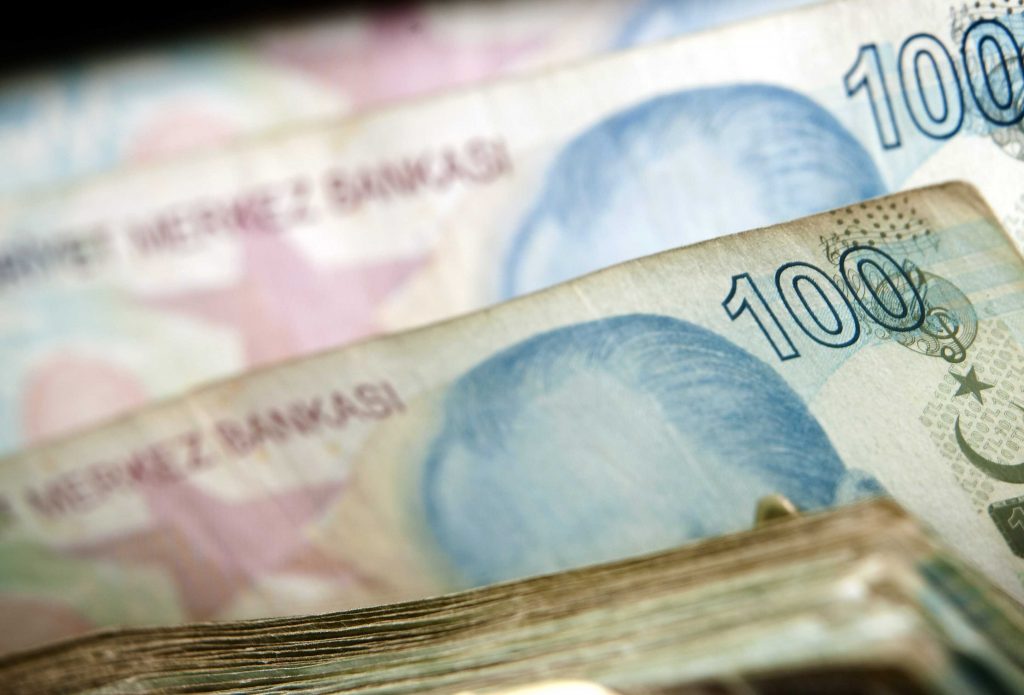Turkey’s central bank specialises in Solomonic decisions. Like the Biblical Jewish king, the bank’s approach to thorny monetary and financial questions is to give a bit to both sides in a dispute. The question, is, however, whether it cuts in equal halves.
 The bank displayed its split screen approach again on Tuesday, announcing it was inching down interest rates by 25 basis points (bringing its borrowing rate to 4.5 per cent and the lending rate to 8.5 per cent), but also introducing tougher reserve requirements on banks. This followed a near identical decision in January.
The bank displayed its split screen approach again on Tuesday, announcing it was inching down interest rates by 25 basis points (bringing its borrowing rate to 4.5 per cent and the lending rate to 8.5 per cent), but also introducing tougher reserve requirements on banks. This followed a near identical decision in January.
In the eyes of Tim Ash at Standard Bank, such hyperactive moves help put the bank “probably at the front of the pack in running the most complicated monetary policy the world has ever seen.” In a less confused vein, he adds: “The combo of lower policy rates to try and deter hot money inflows and prevent the over appreciation of the lira and macro prudential policy to counter the impact on domestic credit growth continues.”
The tactic of cutting interest rates while putting measures in place to stop bank lending getting out of hand is one Ankara started a few years ago as it wrestled with the country’s then runaway economy.
Today, however, the Turkish economy has slowed down considerably. In Tuesday’s note, the bank says “rebalancing between the domestic and external demand continues as envisaged”, adding that domestic demand is following “a moderate pace”.
That loss of economic speed infuriates some politicians, notably Zafer Caglayan, economy minister, who complains that growth last year was just 2.5 per cent, in comments clearly directed at the central bank.
The minister argues that the country could be growing at 6 per cent without inflation or the current account deficit being a concern.
Nor are Ankara’s central bankers necessarily immune to calls for higher growth. Murat Ucer of GlobalSource Partners in Istanbul notes a certain asymmetry in the bank’s approach.
To begin with, there is the question of whether the growth in lending or the currency’s valuation is the more pressing issue.
Ucer sees a contrast here. First there is credit growth – currently at an annualised rate of over 20 per cent compared with a target of 15 per cent. Then there is the lira’s real exchange rate, which he notes is “barely past” the 120 mark (in an index the bank calculates) that the bank holds warrants monetary easing to bring the currency down.
He adds: “The “mix” that entails lower rates/higher reserve ratio requirements on the Turkish lira side is also not doing much – at least so far – in curbing credit growth.”
Inflation expectations also play a big part. Ucer notes a difference between the language of the bank’s January statement, which said core inflation indicators were “expected to continue their downward trend” and Tuesday’s announcement, which held that they were “expected to follow a mild course.” In theory “a mild course” could be in either direction.
As a result, Ucer detects a “pro-growth bias” in the bank’s deliberations.
That may not be too surprising. At some point you have to decide whether to blow on the fire for heat or on the soup to cool it. But it is not to everyone’s liking.
For instance, Ilker Domac at Citibank predicts that the bank will have to return to orthodox monetary policy, because of factors such as inflation, which pushes the real exchange rate ever higher as the nominal exchange rate fails to keep pace. It could be a question of history repeating itself, he argues.
After all, last time around Turkey’s bout with unorthodoxy ended with a dramatic increase in interest rates.
via Turkey: the central bank and conflicting signals | beyondbrics.